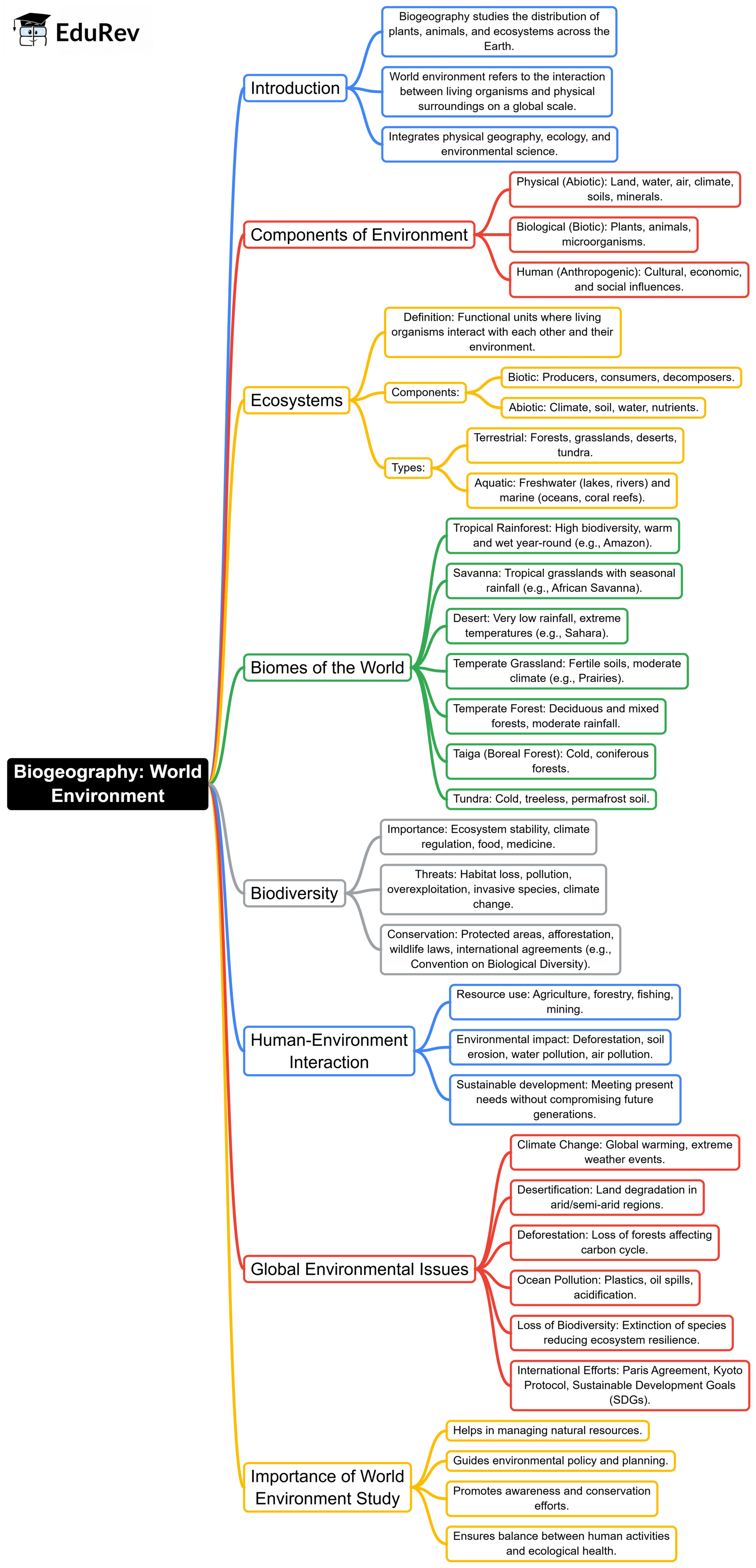UPSC Exam > UPSC Notes > Geography for UPSC CSE > Mind Map: Biogeography: World Environment
Mind Map: Biogeography: World Environment | Geography for UPSC CSE PDF Download

The document Mind Map: Biogeography: World Environment | Geography for UPSC CSE is a part of the UPSC Course Geography for UPSC CSE.
All you need of UPSC at this link: UPSC
|
175 videos|619 docs|192 tests
|
FAQs on Mind Map: Biogeography: World Environment - Geography for UPSC CSE
| 1. What is biogeography and why is it important in understanding world environments? |  |
Ans.Biogeography is the study of the distribution of species and ecosystems in geographic space and through geological time. It is important for understanding world environments because it helps explain how different species adapt to their environments, the impact of climate change on biodiversity, and the historical factors that shape current ecosystems. By studying biogeography, researchers can also predict how species might respond to environmental changes, which is crucial for conservation efforts.
| 2. How does the theory of plate tectonics relate to biogeography? |  |
Ans.The theory of plate tectonics explains the movement of the Earth's lithospheric plates and how this movement affects the distribution of landmasses and oceans over geological time. This has significant implications for biogeography, as the shifting of continents can lead to the isolation or connection of species. For instance, the separation of South America and Africa led to distinct evolutionary paths for species on these continents, influencing their current biodiversity.
| 3. What are the main factors influencing species distribution in biogeography? |  |
Ans.The main factors influencing species distribution include environmental conditions (such as climate, soil type, and topography), biological interactions (including competition, predation, and symbiosis), and historical factors (like continental drift and glaciation). Additionally, human activities such as habitat destruction and climate change also play a critical role in altering species distributions and affecting biodiversity.
| 4. Can you explain the significance of islands in biogeographical studies? |  |
Ans.Islands are crucial in biogeographical studies because they provide unique settings for observing evolutionary processes. Due to their isolation, islands often host endemic species that are not found anywhere else. The theory of island biogeography, proposed by Robert MacArthur and Edward O. Wilson, describes how the size of the island and its distance from the mainland influence species richness. This theory helps scientists understand patterns of colonization, extinction, and biodiversity in isolated environments.
| 5. What role does climate change play in biogeography? |  |
Ans.Climate change significantly impacts biogeography by altering habitats and affecting species distributions. As temperatures rise and weather patterns shift, many species may be forced to migrate to cooler areas or adapt to new environments. This can lead to changes in community composition and threaten the survival of species that cannot adapt quickly enough. Understanding these changes is essential for biodiversity conservation and developing strategies to mitigate the impacts of climate change on ecosystems.
Related Searches





















